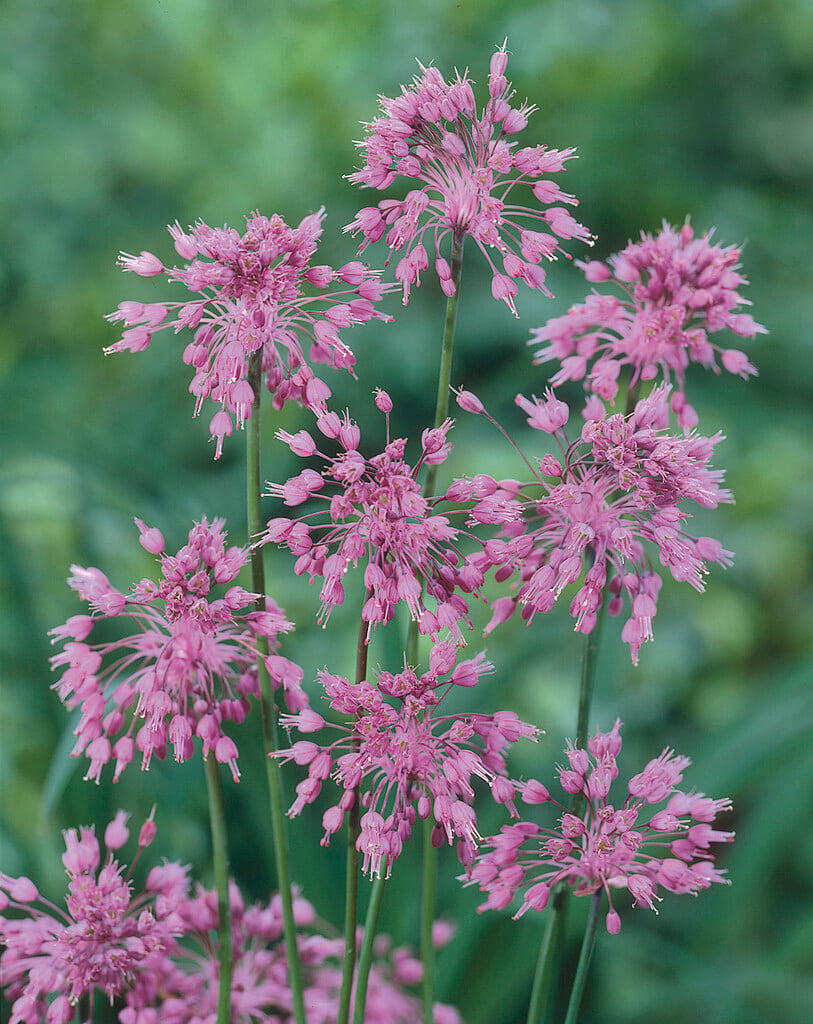Allium carinatum
keeled garlic
Rapidly spreading bulbous perennial about 60cm in height, with linear mid-green leaves to 8cm long, Loose umbels of of up to 30 bell-shaped purple flowers to 5cm across, often with bulbils, are borne during midsummer; best in informal planting
Size
Ultimate height
0.5–1 metresTime to ultimate height
2–5 yearsUltimate spread
0.1–0.5 metresGrowing conditions
Moisture
Moist but well–drained, Well–drainedpH
Alkaline, NeutralColour & scent
| Stem | Flower | Foliage | Fruit | |
| Spring | Green | |||
|---|---|---|---|---|
| Summer | Purple | Green | ||
| Autumn | Green | |||
| Winter |
Position
- Full sun
Aspect
South–facing or West–facing or East–facing
Exposure
Exposed or Sheltered Hardiness
H5Botanical details
- Family
- Amaryllidaceae
- Native to GB / Ireland
- No
- Foliage
- Deciduous
- Habit
- Clump forming
- Potentially harmful
- TOXIC to pets - see the HTA guide to potentially harmful plants for further information and useful contact numbers
- Genus
Allium are bulbous herbaceous perennials with a strong onion or garlic scent, linear, strap-shaped or cylindrical basal leaves and star-shaped or bell-shaped flowers in an umbel on a leafless stem
- Name status
Correct
- Plant range
- Europe to Turkey
How to grow
Cultivation
Grow in full sun and fertile well-drained soil. It is best to grow in containers where garden soil is heavy clay and prone to saturation over winter. Spreads rapidly so best in informal planting. See allium cultivation
Propagation
Propagate by offsets which can be carefully detached by lifting the bulb after flowering has finished. See bulb propagation
Suggested planting locations and garden types
- City and courtyard gardens
- Coastal
- Cottage and informal garden
- Gravel garden
- Patio and container plants
- Wildlife gardens
- Flower borders and beds
Pruning
No pruning required, other than to remove old flowered stems and foliage
Pests
May be susceptible to allium leaf miner and onion fly
Diseases
May be susceptible to onion white rot, and onion downy mildew
Love gardening
Sign up to receive regular gardening tips, inspiration, offers and more
View our Privacy Policy
Get involved
The Royal Horticultural Society is the UK’s leading gardening charity. We aim to enrich everyone’s life through plants, and make the UK a greener and more beautiful place.

